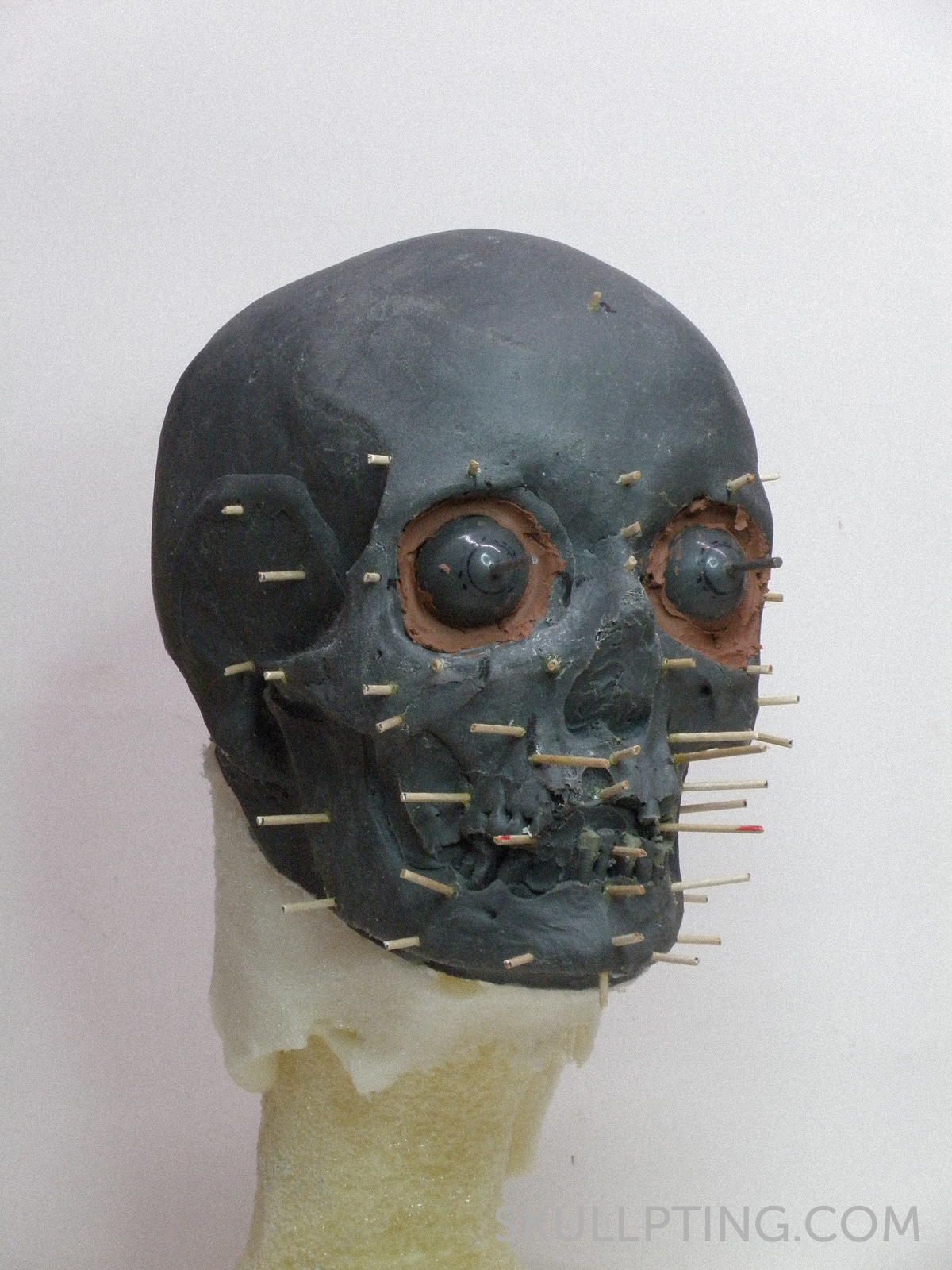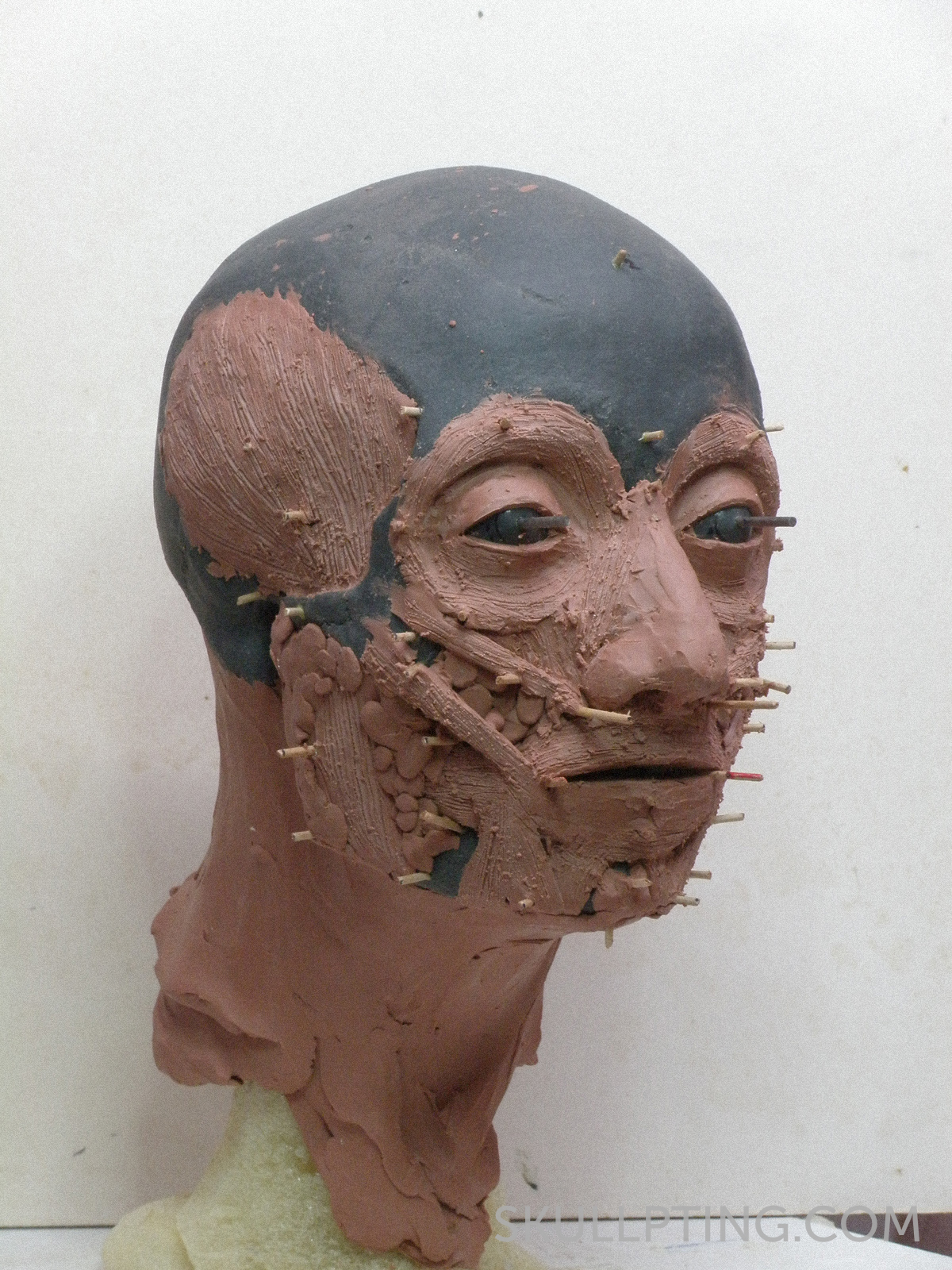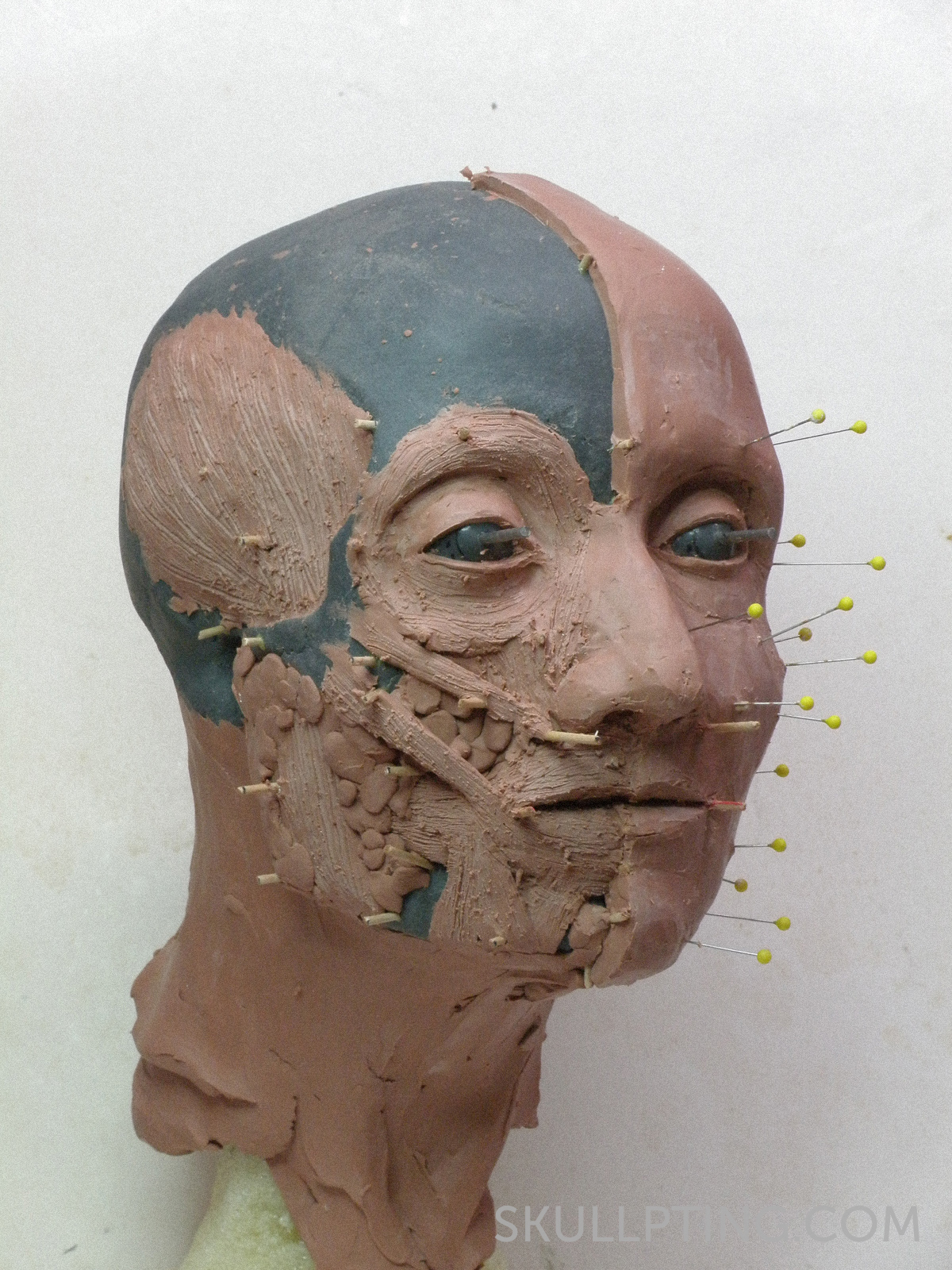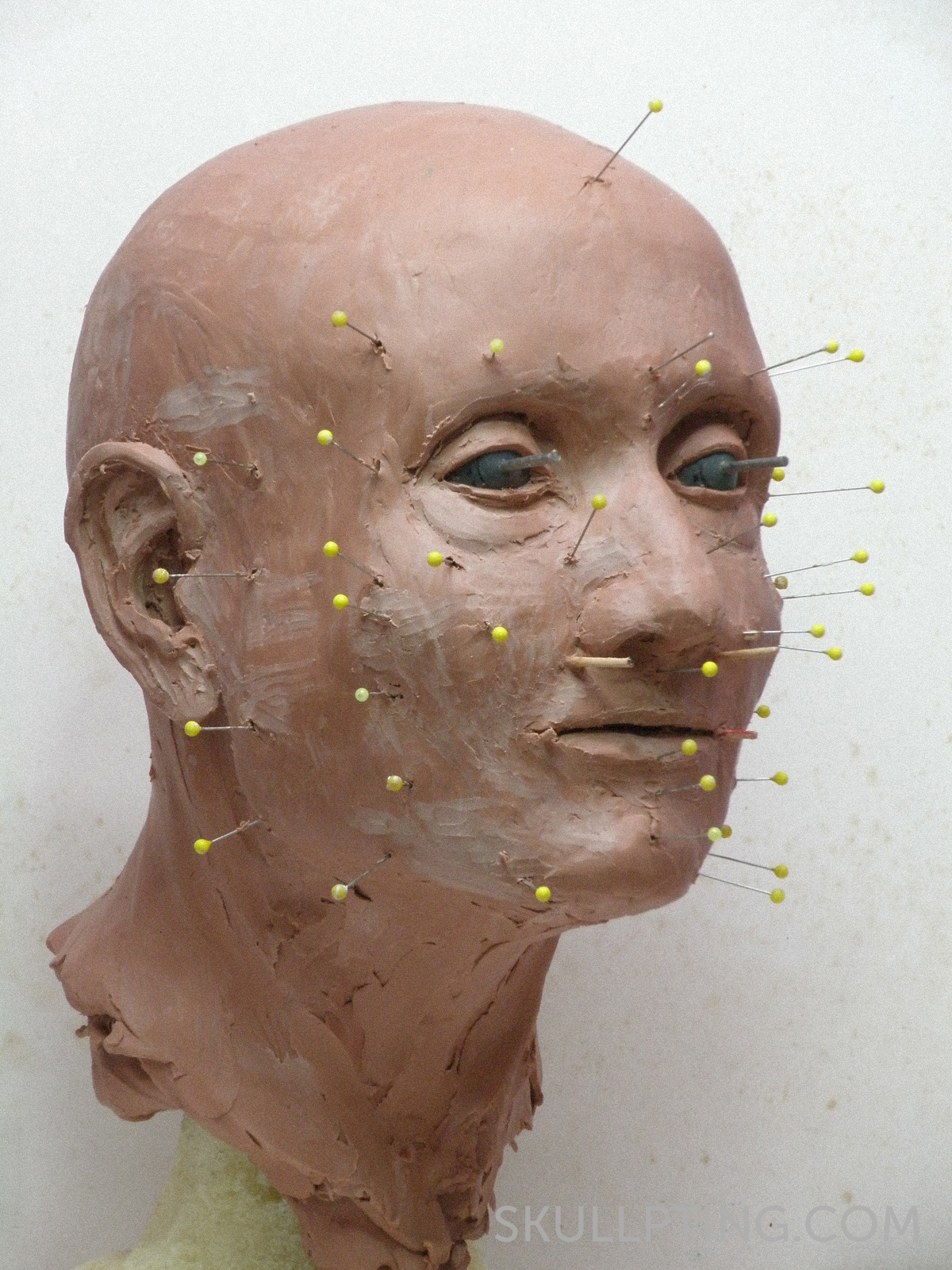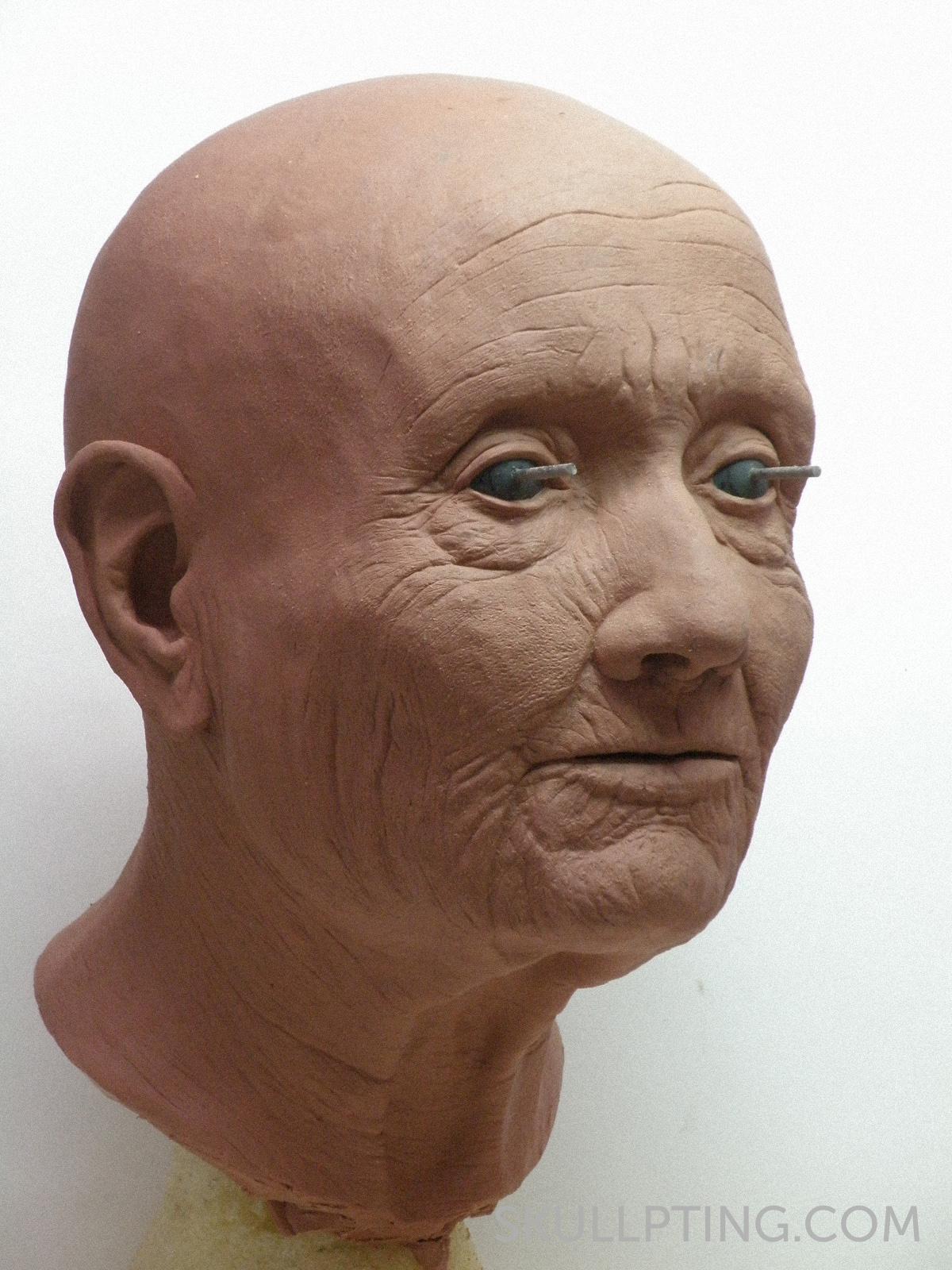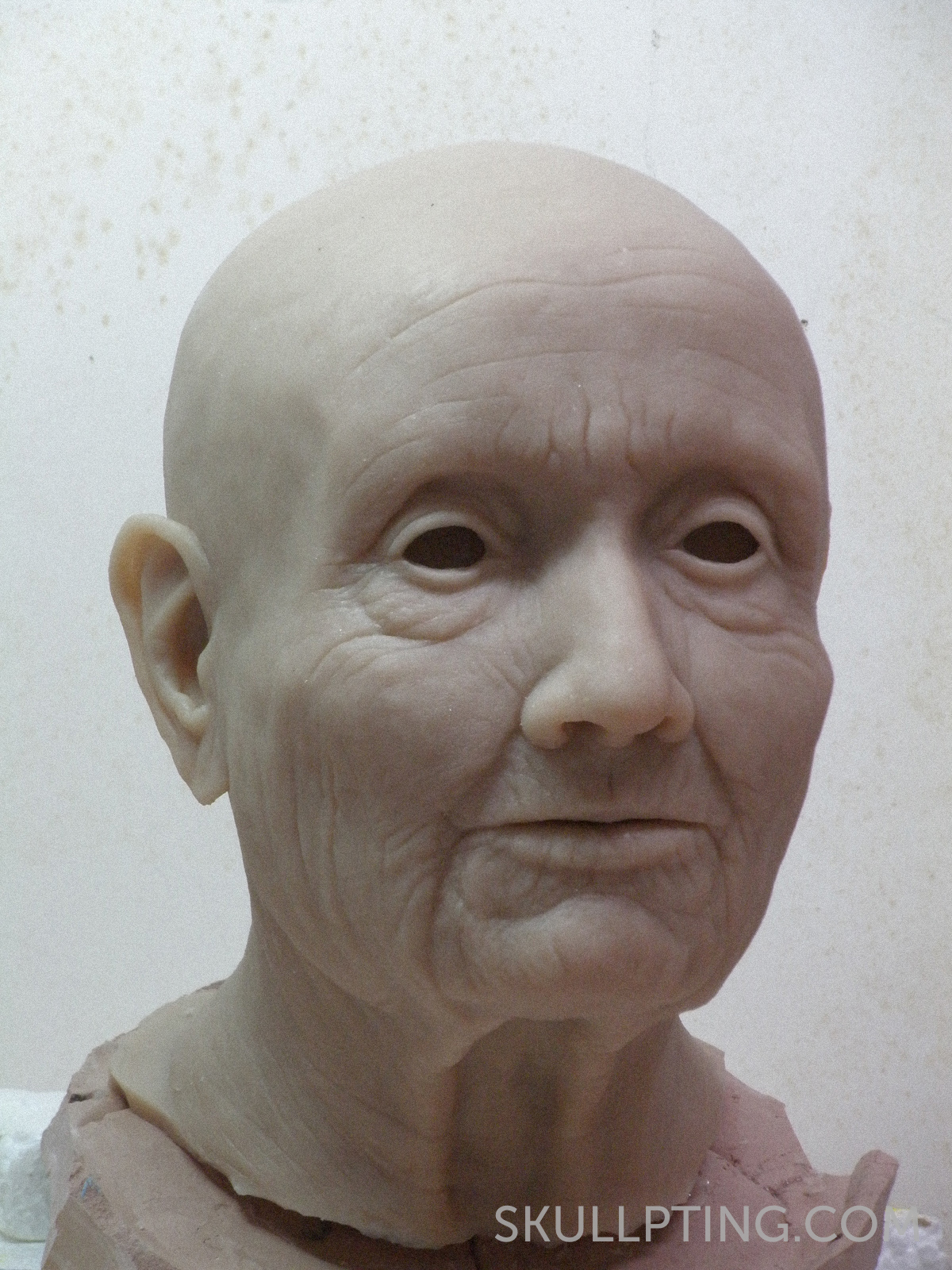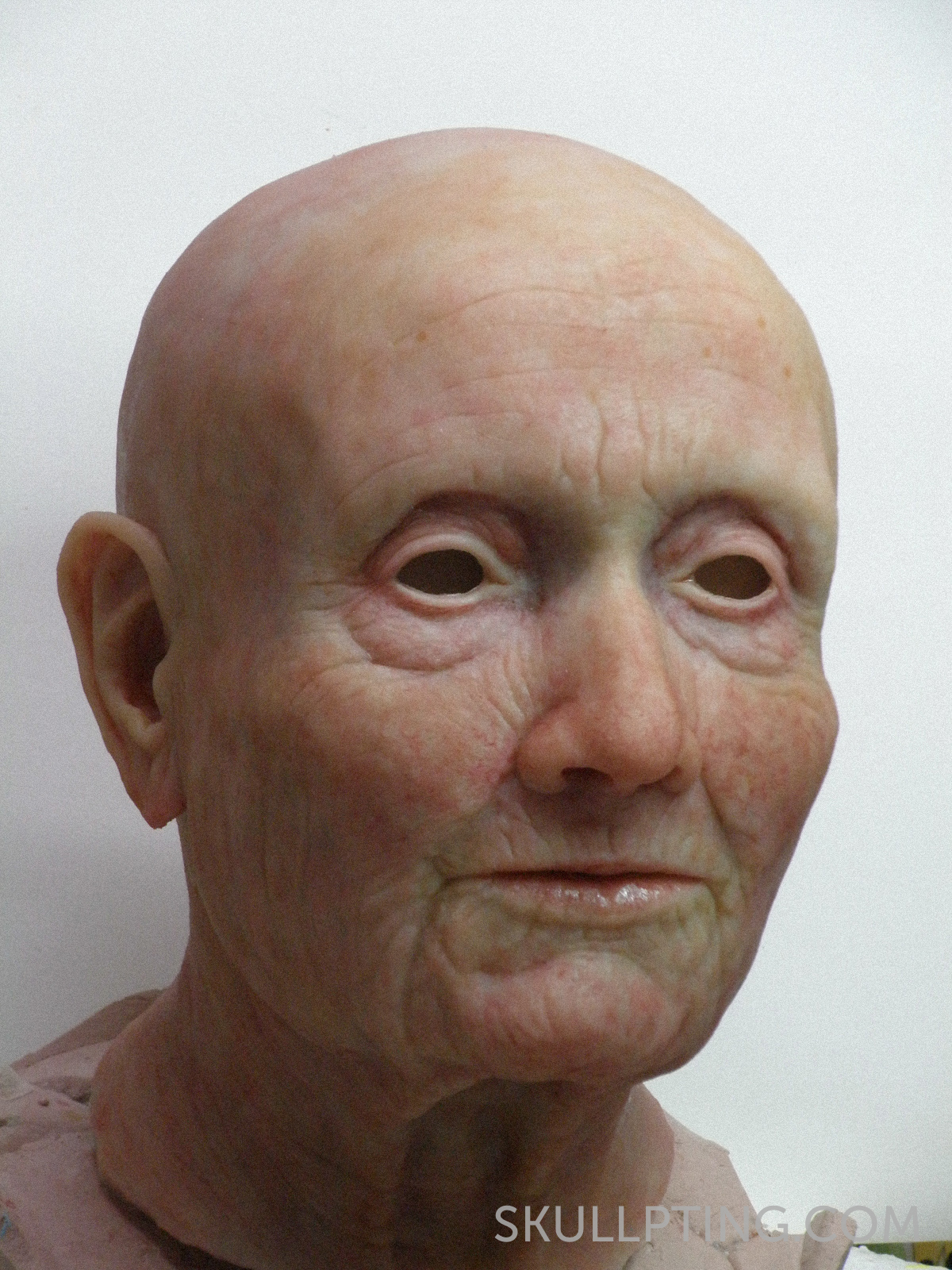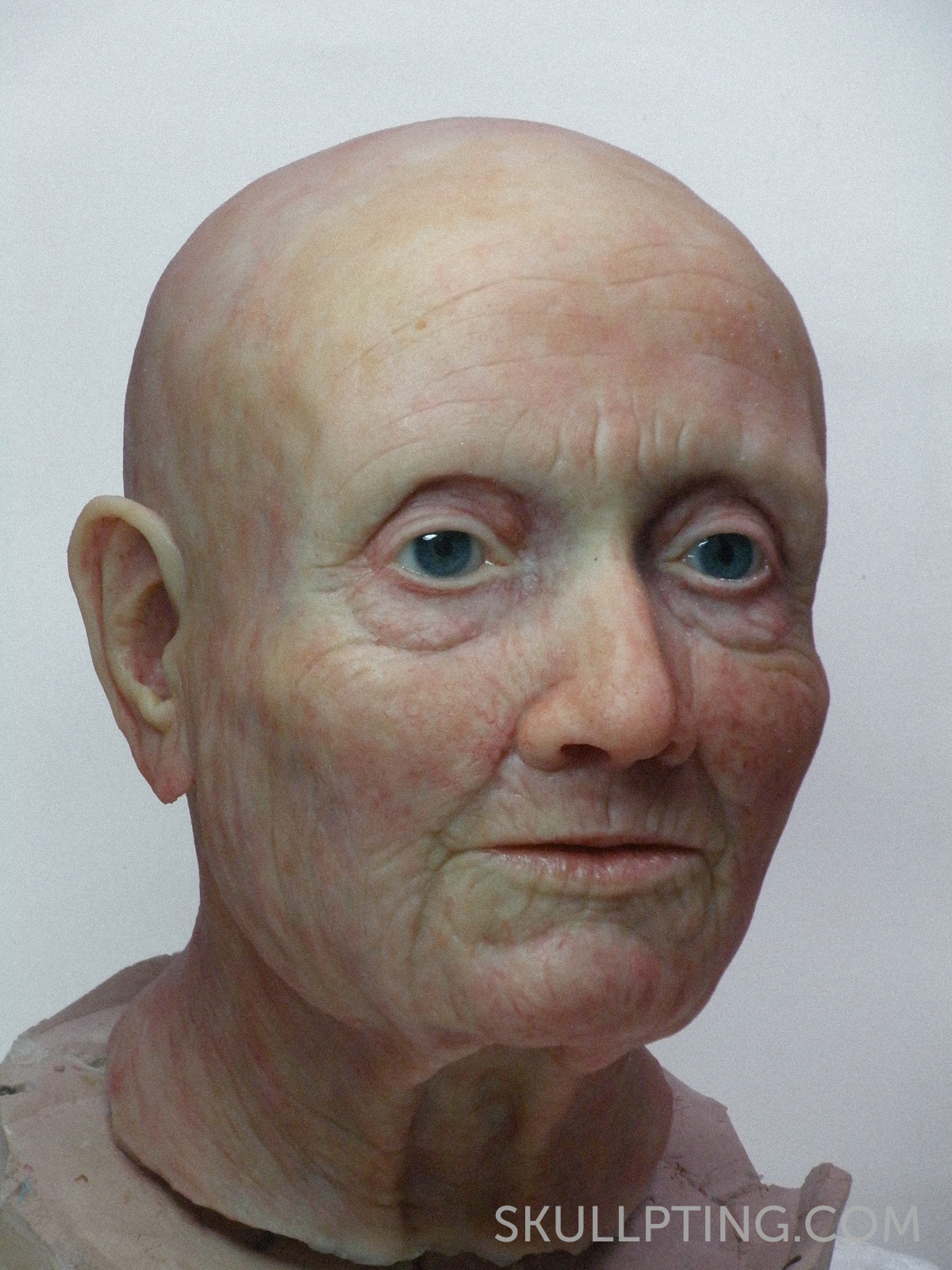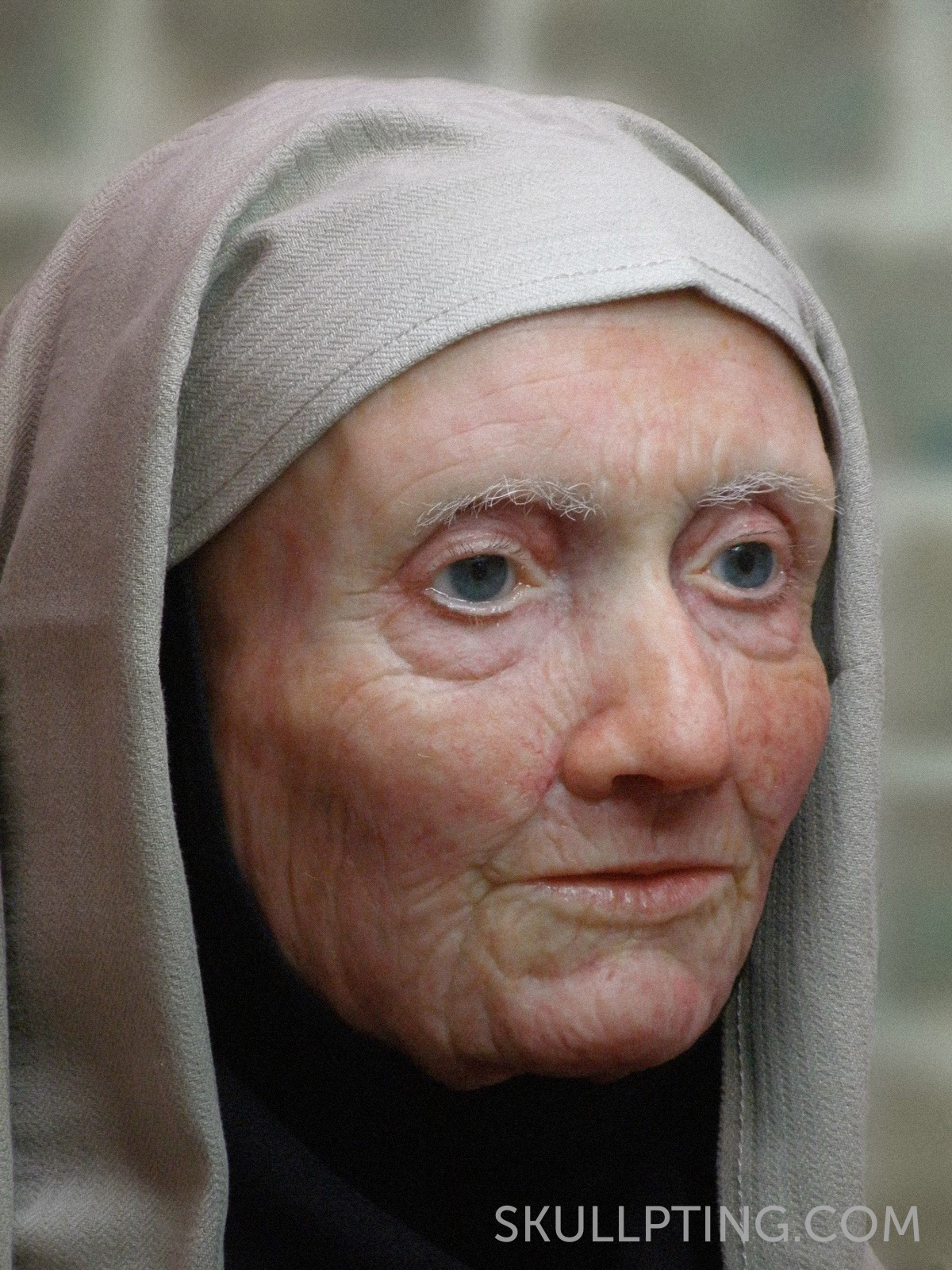method
A facial reconstruction begins with the original skull.
A copy is made by 3D scanning and 3D printing or, if the skull is strong enough, by molding and casting. In this way the original skull remains undamaged during the process. The faces are reconstructed according to established forensic methods. These methods are based on the average tissue thicknesses measured at various landmarks on the skull, and they use guidelines for the shape, size and position of different facial features. These guidelines are applied to the unique anatomy and measurements of the chosen skull. The finished sculpture is molded, and this mold can be cast in the desired and appropriate material, shown here is silicone rubber. After painting, artifical eyes and human hair make the face complete. The combination of scientific knowledge, artistic talent and modern techniques ensures that the faces look very lifelike.



